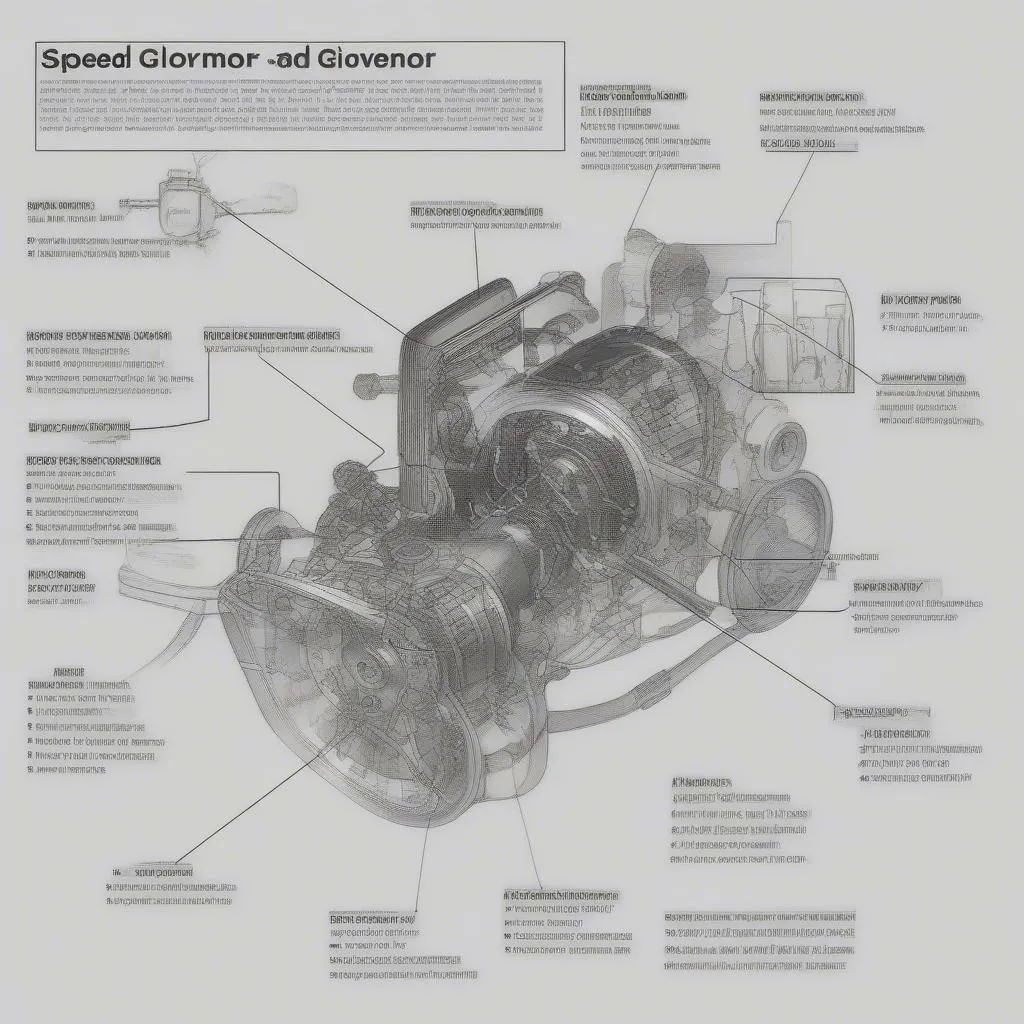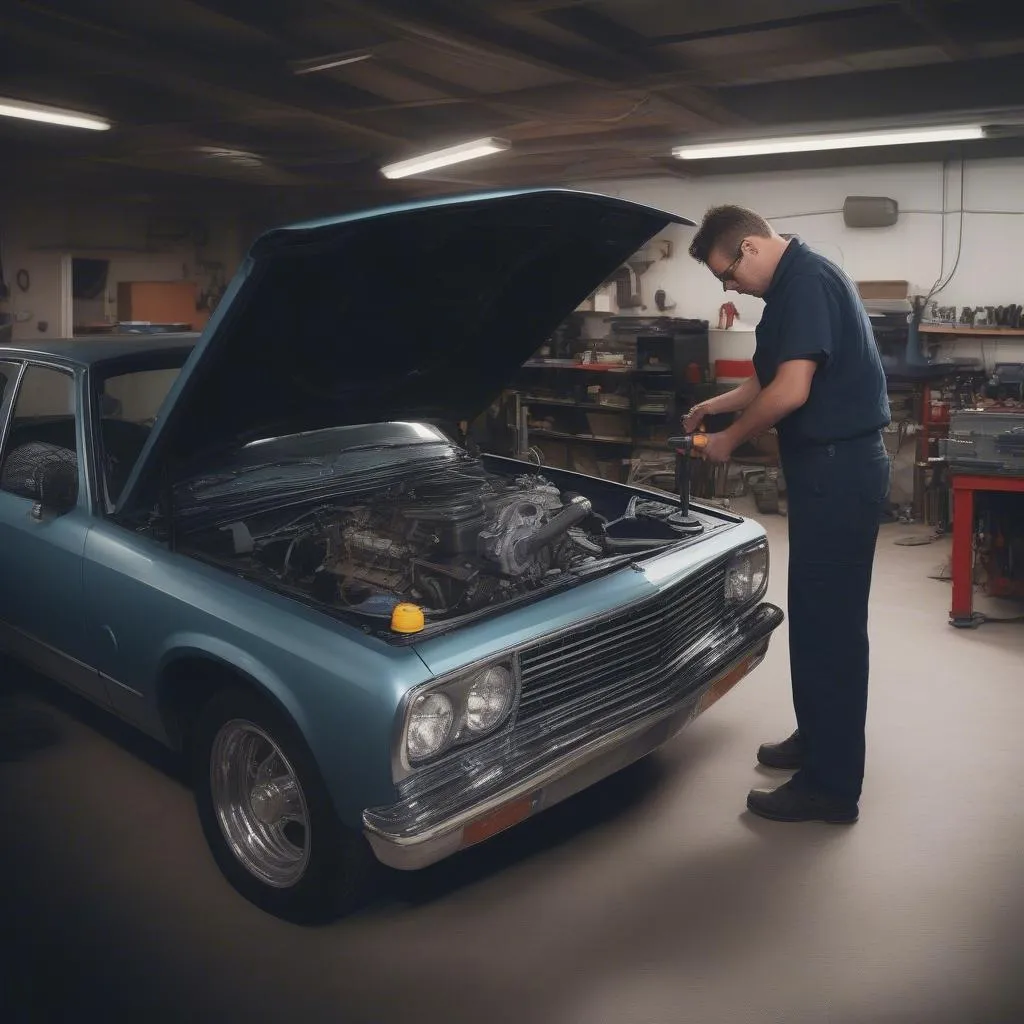You’re cruising down the Autobahn in your sleek German sedan, the engine purring like a content cat. You push the gas pedal, eager to unleash the full potential of your machine, but then… it hits you. A wall. Not a literal one, thankfully, but an electronic barrier preventing you from exceeding a certain speed. This, my friend, is the work of a speed governor.
 Car Speed Governor Diagram
Car Speed Governor Diagram
Now, you might be wondering, “Can I remove this governor and finally experience the true freedom of the open road?” It’s a question that’s crossed many a car enthusiast’s mind, and today, we’re diving deep into this intriguing topic.
What Does Removing a Car’s Governor Mean?
Before we delve into the how-tos and what-ifs, let’s clarify what removing a car’s governor actually entails.
Imagine the governor as a strict chaperone at a high school dance, preventing the music from going above a certain decibel level. Removing it is like telling the chaperone to take a hike, allowing the music (or in this case, your engine) to reach its full, unrestrained potential.
From a technical standpoint, a speed governor, often integrated into the Engine Control Unit (ECU), limits fuel flow or spark timing once your car reaches a pre-set speed. This effectively caps your maximum speed. Removing it involves reprogramming the ECU or, in older vehicles, physically altering mechanical components.
But it’s not just about mechanics. This seemingly simple act has legal, ethical, and safety implications that we need to explore.
The Need for Speed: Why Remove the Governor?
The desire to remove a speed governor can stem from various motivations:
- Performance Enhancement: For racing enthusiasts or those seeking to maximize their car’s capabilities on closed tracks, removing the governor seems like a tempting proposition.
- Fuel Efficiency Misconceptions: Some believe removing the governor will improve fuel economy. This is often a misconception, as driving at consistently higher speeds usually consumes more fuel.
- “My Car, My Rules” Mentality: A sense of personal liberty and the allure of pushing boundaries can also be motivating factors.
But before you rev up to break free, let’s pump the brakes and consider the potential consequences.
The Risks and Repercussions: Proceed with Caution
While the idea of unrestricted speed might sound exhilarating, it’s crucial to acknowledge the potential downsides:
-
Legality Issues: In many jurisdictions, tampering with a vehicle’s speed governor is illegal for vehicles driven on public roads. The specific laws vary, but violations can result in hefty fines, license suspensions, or even vehicle impoundment.
-
Safety Hazards: Removing the governor can increase the risk of accidents due to higher potential speeds. Your car’s braking system and other safety features are designed with the governed speed in mind. Exceeding these limits can lead to dangerous situations, especially in emergencies.
-
Warranty Concerns: Modifying your car’s ECU or other components to remove the governor can void your warranty, leaving you liable for costly repairs down the line.
“Removing a speed limiter is akin to removing the safety net from a trapeze act,” warns automotive engineer, Dr. Amelia Vargas, author of “The Automotive Nervous System: Understanding Your Car’s Electronics.” “It might seem liberating initially, but the risks far outweigh any perceived benefits.”
Navigating the Dilemma: Alternatives and Considerations
If you’re grappling with the governor dilemma, consider these points:
- Track Days: If speed is your ultimate pursuit, explore legitimate avenues like track days organized at dedicated racing circuits. This allows you to push your car to its limits in a controlled and legal environment.
- Performance Upgrades: Instead of tampering with the governor, consider performance upgrades that enhance your car’s handling, acceleration, and overall driving experience within legal speed limits.
- Professional Consultation: If you’re still set on removing the governor, consult with a qualified automotive technician who can advise you on the legal and technical implications specific to your vehicle and location.
 Car Mechanic Inspecting Engine
Car Mechanic Inspecting Engine
Frequently Asked Questions about Speed Governors
- Can I install a different governor with a higher speed limit?
- This is possible but still likely to have legal ramifications if the new limit exceeds what’s permitted in your area.
- Do all cars have speed governors?
- Most modern cars have electronic speed governors. Older vehicles may have mechanical ones.
- Can a dealership remove the governor for me?
- Reputable dealerships are unlikely to perform modifications that violate legal regulations.
Thinking of Tweaking Your Ride?
We’ve covered the ins and outs of removing a car’s speed governor. Remember, when it comes to modifications, prioritize safety, legality, and responsible driving above all else.
Have more questions about car modifications or need help with your vehicle’s diagnostics? Don’t hesitate to contact us via WhatsApp at +84767531508. Our team of expert mechanics is available 24/7 to provide you with the best advice and support.
And don’t forget to check out our other articles on car maintenance, repairs, and performance enhancement for more helpful information!